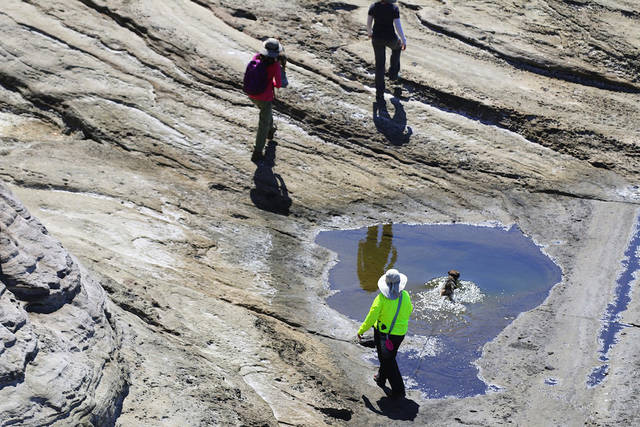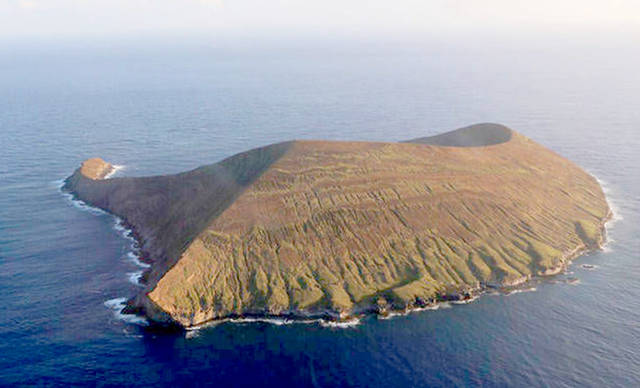LIHUE — There are more seabirds on Lehua Island after the 2017 helicopter drop of rodenticide over the landmass, but the rats haven’t completely disappeared.
“Because there have been periodic detections of rats in localized areas, the Lehua Island Ecosystem Restoration Project is in a mop-up phase to complete the eradication,” said Dan Dennison, spokesman for the state Department of Land and Natural Resources, a partner in the project.
Bait boxes are being used when rats are detected and project partners are using traps and tracking tunnels to find them, but have only had luck detecting the rats by using motion activated cameras.
In total, more than 200 devices are being used islandwide by project partners, which include DLNR, U.S. Fish and Wildlife Service, and the nonprofit organization Island Conservation. The state Department of Agriculture approved permits to do the aerial application of diphacinone.
“There have been multiple month periods where no rats have been detected,” Dennison said. “When rats are detected, a grid of bait boxes is deployed. The Project continues to explore additional options to remove rats from Lehua Island.”
More than a year after the 2017 aerial rodenticide application, rat-detecting dogs were taken to Lehua to find stragglers in the rodent population. That was in mid-June 2018 and that didn’t work as well as was hoped.
“Although there were a few detections, the dogs were not as effective as we would have liked due to their interactions with birds in burrows and likely a need for additional training,” Dennison said.
One back-up plan discussed in 2017 was to repeat the aerial rodenticide application using the more powerful rat poison brodificoum, which would require the same DOA permits as the 2018 rodenticide drop.
Project partners aren’t confirming whether that’s still an option, but permits haven’t been approved at HDOA for the use of that rat poison.
And while they’re having trouble killing every rat on the island, project partners said preliminary evidence says they’re making progress toward the overall goal of restoration on Lehua.
“Initial indications are that some of the smallest of the seabirds, and thus the ones most at risk from the rats, have done remarkably well since the initial bait drop,” Dennison said.
For example, the population of Bulwer’s Petrels nesting on the island has increased.
“In previous years, we only found a few of these seabirds and most failed due to rat depredation,” Dennison said.
Project partners are still in the process of analyzing data on the island to estimate population changes since the first aerial drop of rodenticide, and more detailed information is coming soon, Dennison said
Plant populations have started to come back as well.
“There have also been preliminary planning discussions regarding plant restoration,” Dennison said. “Seeds are being collected and stored in anticipation of a restoration effort.”







Why not use the prophane oxygen gas mix called the Rodenator which pumps this explosive gas mixture in the rat tunnels and is ignited causing a flash wave shock throughout the entire tunnel system killing both live rats and its babies the same way it is used against burrowing rodents.
When we were in high school we used to pump gasoline down the rat tunnels on my uncle’s chicken farm and threw a lighted match and watch the flame rush through the tunnels often flushing out those huge rats that singed its hair on fire. You can hear and feel the concussion running through the length of those tunnels.
Disgusting how do you sleep at night.
These projects are so tricky but they should’ve just used the real rodenticide the first time. That stuff has been proven as the most effective option time and time again on projects all over the world. It’s controversial but has the highest success rate globally. Glad the birds are bouncing back from all the rat predation though. Hopefully they get the last few rats soon